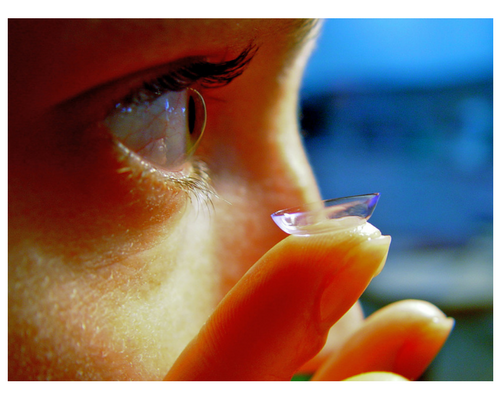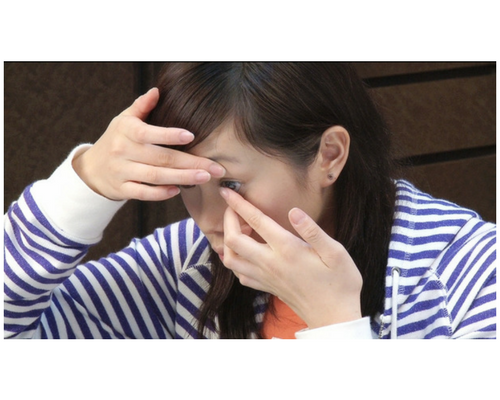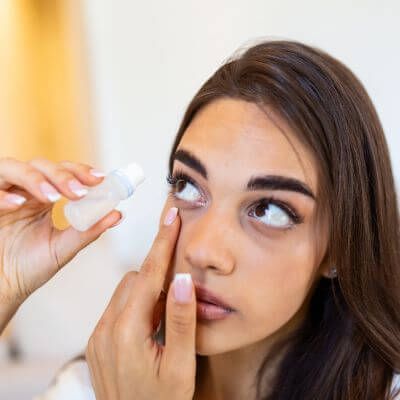How to Put In & Take Out Contact Lenses the Right Way
 As a contacts wearer, you are putting a foreign entity in your eye. While the lenses are prescribed and safe in and of themselves, it’s important to follow a strict set of guidelines of what to do and what not to do to keep them that way. How you put in, take out, clean, and store your lenses may be the difference between healthy eyes and damaged eyes.
As a contacts wearer, you are putting a foreign entity in your eye. While the lenses are prescribed and safe in and of themselves, it’s important to follow a strict set of guidelines of what to do and what not to do to keep them that way. How you put in, take out, clean, and store your lenses may be the difference between healthy eyes and damaged eyes.
Here’s how to PUT IN contact lenses the right way.
Step 1: Wash your hands with oil-free unscented soap and dry them completely with a clean towel.
Step 2: Rinse your lenses with contact solution to remove any invisible dirt or debris.
Step 3: Starting with your RIGHT eye, put the contact lens on the tip of your index finger. Double check to make sure it’s not inside out.
Step 4: With your left hand, hold your right upper eyelid open so you don’t accidentally blink.
Step 5: With your right hand, pull down your right lower eyelid with your free fingers.
Step 6: Look up and place the contact lens on the white of your eye and then push it upward.
Step 7: Remove your hands from your eyelids, close your eye naturally, and blink a few times. The lens should center itself.
Step 8: If your contact lens feels uncomfortable, take it out and check to see if it is damaged. If it is, throw it away. If it is not, rinse the lens with contact solution and repeat steps 3-7 to reinsert.
Repeat these instructions for the LEFT eye.
Tip: Always starting with the same eye first will keep you from mixing up your contact lens prescriptions or accidentally putting two contacts in the same eye. That may sound silly, but it happens all the time!
Here’s how to TAKE OUT contact lenses the right way.
 Step 1:
Wash your hands with oil-free unscented soap and dry them completely with a clean towel.
Step 1:
Wash your hands with oil-free unscented soap and dry them completely with a clean towel.
Step 2: Take the lid off the RIGHT side of your contact lens case and rinse it out with contact solution to remove any invisible dirt or debris.
Step 3: Look up and pull down your lower eyelid of your RIGHT eye with your left hand.
Step 4: With your right index finger, touch the lower edge of the contact lens.
Step 5: Slide your contact lens down to the white part of your eye.
Step 6: Use your right thumb and index finger to gently squeeze the contact lens and remove it from your eye.
Step 7: Place the lens back into the RIGHT side of the case, top it with contact solution, and put the lid on.
Repeat these instructions for the LEFT eye.
Are you new to contacts?
We’ve put together a list of application tricks for beginners. Check them out!
 If you’ve tried wearing contacts for a few weeks and feel like they’re not for you, there may be some other glasses-free options for you to consider.
If you’ve tried wearing contacts for a few weeks and feel like they’re not for you, there may be some other glasses-free options for you to consider.
LASIK is a non-invasive refractive surgery option used to treat nearsightedness (myopia), farsightedness (hyperopia), astigmatism, and presbyopia. Read Which is Which? to learn more about these refractive disorders.
Are you ready to see if LASIK is right for you? Schedule your free LASIK consultation with one of our doctors by requesting an appointment online or giving us a call at 865-579-3920.


MORRISTOWN
SEVIERVILLE
TENNESSEE VALLEY - LASER CENTER
TENNESSEE VALLEY - EYE CENTER




